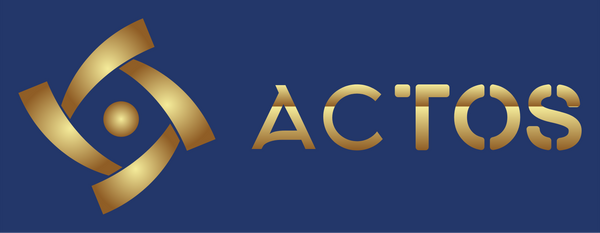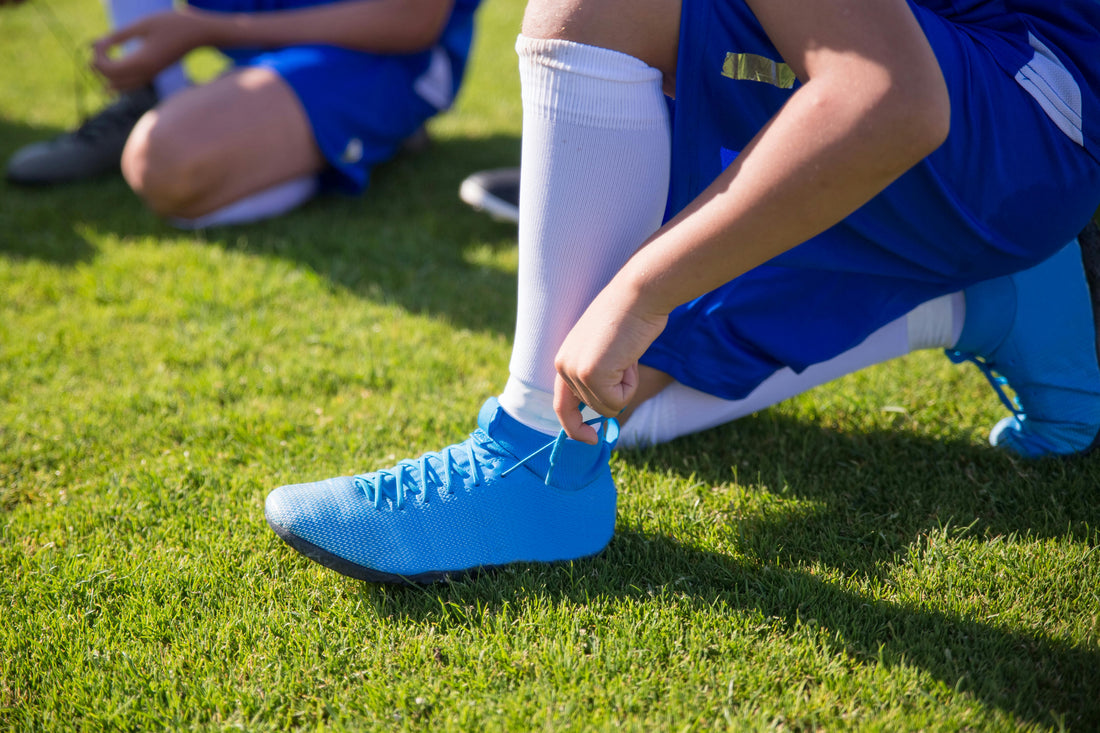If you’re a sports parent like us, you know the joy of watching your kid light up on the field or track. That burst of speed down the straightaway. That powerful kick. The way they live for the game.
But you probably also know the look they give when something isn’t quite right. The slow limp off the field. The quiet “my knee hurts” on the ride home. That hesitation when warm-ups begin.
In our family, joint pain crept in during growth spurts—knees that throbbed after a tournament, hips that tightened mid-sprint, and ankles that just felt “off.” It wasn’t always an injury, but it was enough to shake their confidence, slow their progress, and sometimes steal the joy from the sport they love.
We’ve learned that joint pain in growing athletes is more common than we realized. And while it’s often part of development, it’s not something to ignore. It impacts their performance—but even more so, their mindset. That’s why understanding what’s normal, what’s not, and what you can actually do about it matters.
Why Growing Kids Get Joint Pain
During adolescence, the body grows fast—and not always evenly. Bones lengthen quickly, while muscles and tendons take time to catch up. That mismatch creates tightness, stiffness, and pain—especially under the pressure of intense training.
Common causes of joint pain in youth athletes include:
- Growth spurts (typically between ages 8–15)
- Repetitive movements from running, kicking, or throwing
- Muscle imbalances or poor movement mechanics
- Overtraining or not enough rest
While it’s often easy to chalk these issues up to “just growing pains,” the combination of rapid growth and repetitive sports movements puts real stress on developing joints. That’s why it’s so important to stay proactive with prevention and care.
How Joint Pain Affects Performance
Joint pain doesn’t just slow a kid down physically—it messes with their rhythm, confidence, and motivation.
You might notice your athlete:
- Avoids certain moves like kicking or cutting
- Runs with poor form to protect the painful area
- Gets frustrated or discouraged about “losing a step”
- Starts to fear pushing too hard
These aren’t just signs of discomfort, they’re signs your athlete is adapting to pain, which can lead to poor mechanics and even further injury if left unchecked. Paying attention early makes a big difference.
When You Should Worry
Some soreness is normal during growth, especially after intense practices or games. But there are times when joint pain signals something more serious.
Talk to a specialist if your child:
- Limps or avoids using a joint
- Has swelling, warmth, or redness around the joint
- Complains of pain that doesn’t ease with rest
- Starts to lose range of motion or flexibility
- Suddenly struggles with activities they used to do easily
Trust your gut. If something seems off and isn’t improving with rest, it’s better to have it looked at. Early intervention can help prevent more serious injuries down the line.
What Helped Our Kids
Every child is different, but here’s what worked for us when our athletes started showing signs of joint discomfort:
We focused on:
✅ Modifying activity—not stopping it
- We reduced high-impact drills and subbed in lower-impact options.
- We used that time to zero in on technique, balance, and light strength work.
Slowing down doesn’t mean giving up. In fact, it often led to better movement and more confidence when they returned to full speed.
✅ Stretching and strengthening
- Gentle warm-ups before practice and good stretches after.
- Core, glute, and stability training to take pressure off joints.
We noticed that when the muscles around the joints were stronger and more flexible, the pain often eased—and their performance improved.
✅ Icing after activity
- 10–15 minutes on sore joints after practice helped reduce inflammation.
It became part of our post-practice routine, and our kids actually started requesting it on their own once they realized how much it helped.
✅ Checking gear
- Making sure their cleats or sneakers weren’t worn down.
- Adding supportive braces or padding during flare-ups.
Sometimes pain came down to something as simple as a pair of old shoes or missing arch support.
✅ Focusing on recovery
- Prioritizing sleep, hydration, and anti-inflammatory foods.
- Scheduling extra rest days during intense growth periods.
We treated recovery as part of the training plan, not an afterthought—and it made a huge difference in keeping them healthy and mentally strong.
✅ Cross-training for variety and reduced impact
- We added low-impact activities like swimming and cycling during flare-ups.
- Brazilian jiu-jitsu, yoga, or even playful movement kept them active without overloading the same joints.
Cross-training gave them a mental break from their main sport while building strength, flexibility, and body awareness in a different way. It kept them moving—and often made them better all-around athletes.
Don’t Forget the Mental Game
For competitive kids, joint pain can feel like failure. They worry about letting teammates down. They don’t want to seem “weak.”
We had to remind our kids—and ourselves—that rest is part of training, not a setback. That listening to their body is what smart athletes do. And that this phase is temporary, even if it doesn’t feel like it when they’re hurting.
Their confidence grew as they learned that taking care of their body was just as important as pushing their limits.
Final Thoughts
Joint pain in young athletes is real—but manageable. With awareness, patience, and a plan, we can help our kids stay active and grow strong the right way.
Because being a great athlete isn’t just about talent. It’s about knowing when to push—and when to pause. And that’s something they’ll carry with them far beyond the game.
The Game-Changer Is Here: Introducing the HEROS Training System!
We know you want the best for your young athlete, and we’ve made it easier than ever to give it to them. We've officially launched the HEROS Training System, an off-season strength training program specifically designed for youth and teen athletes who are serious about leveling up.
Our programs are built on a foundation of excellence, focusing on:
- Age-appropriate strength development that respects their growing bodies.
- Age appropriate weight & and power training to unleash their full athletic potential.
- Mobility and injury prevention strategies to keep them in the game.
Designed by our experts in youth training, strength and conditioning, and exercise performance, HEROS gives your athlete a smarter, more effective way to train—not just harder.
Ready to build your foundation? Let’s get to work.
We want to hear from you! Leave us your thoughts and comments and do not forget to visit our websites: ACTOS Performance Innovation and HEROS Training System for updates, further information and services designed for you. Please also follow us on Facebook and Instagram for ACTOS and HEROS.
Until next time and remember, More is not always better; better is always better!!
Jessica
ACTOS Performance Innovation
Jessica holds a B.S. in Kinesiology and an MPH, with a strong background in health and wellness. She’s worked as a personal trainer, bootcamp instructor, as well as a Health & Fitness Director, leading large-scale wellness programs. As the former owner of a successful personal training business, she also partnered with local gyms and the military Morale, Welfare, and Recreation (MWR) department to deliver customized fitness solutions.

